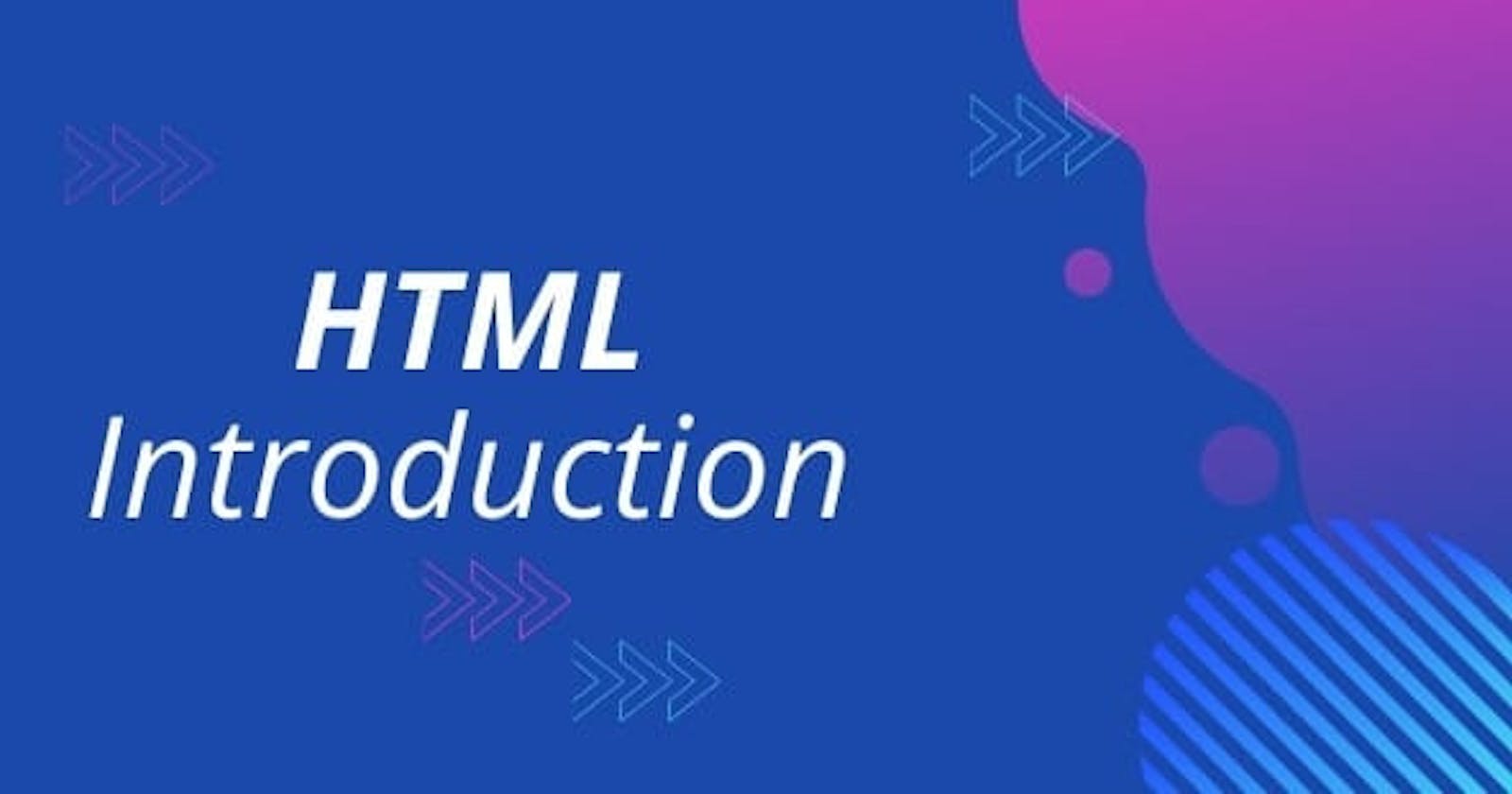What is HTML
HTML is an acronym which stands for Hyper Text Markup Language which is used for creating web pages and web applications. Let's see what is meant by Hypertext Markup Language, and Web page.
Hyper Text: HyperText simply means "Text within Text." A text has a link within it, is a hypertext. Whenever you click on a link which brings you to a new webpage, you have clicked on a hypertext. HyperText is a way to link two or more web pages (HTML documents) with each other.
Markup language: A markup language is a computer language that is used to apply layout and formatting conventions to a text document. Markup language makes text more interactive and dynamic. It can turn text into images, tables, links, etc.
The HTML code itself does not contain any content, it is just a set of instructions that tell browsers how to display content on screen. A web page is a document that is accessed over the internet. Web pages are written in HTML and contain hyperlinks to other pages.
HTML TAGS
The
tag in HTML defines a paragraph. These have both opening and closing tags. So anything mentioned within
and
is treated as a paragraph. syntaxMy first paragraph
The heading tag is used in HTML to define headings of a page. Headings are defined by , with “n” being a number between 1 and 6 Example
<!DOCTYPE>
<html>
<head>
<title>Web page title</title>
</head>
<body>
<h1>Write Your First Heading</h1>
<p>Write Your First Paragraph.</p>
</body>
</html>
Server
On the hardware side, a web server is a computer that stores web server software and a website's component files (for example, HTML documents, images, CSS stylesheets, and JavaScript files). A web server connects to the Internet and supports physical data interchange with other devices connected to the web. On the software side, a web server includes several parts that control how web users access hosted files A server is an online computer system that connects websites to internet or provides data center services. Servers can have a variety of operating systems, built-in capabilities and configurations depending on the creators’ needs when they are designed.
Apache
Apache is a group of open source software modules that can be assembled together to create web servers very quickly in C and PHP programs.Apache is the most commonly used Web server on Linux systems. Web servers are used to serve Web pages requested by client computers. Clients typically request and view Web pages using Web browser applications such as Firefox, Opera, Chromium, or Internet Explorer.
img src
The src attribute contains a URL pointing to the image you want to embed in the page. As with the href attribute for elements, the src attribute can be a relative URL or an absolute URL. Without a src attribute, an img element has no image to load It is a necessary attribute that describes the source or path of the image. It instructs the browser where to look for the image on the server.
The location of image may be on the same directory or another server.
alt
The alt attribute defines an alternate text for the image, if it can't be displayed. The value of the alt attribute describe the image in words. The alt attribute is considered good for SEO prospective.
width
It is an optional attribute which is used to specify the width to display the image. It is not recommended now. You should apply CSS in place of width attribute.
height
It h3 the height of the image. The HTML height attribute also supports iframe, image and object elements. It is not recommended now. You should apply CSS in place of height
Syntax
<img src="image.jpg" alt="" width="" height="">
lorem
The lorem tag inserts a specified amount of random text. The "random" text is the famous "Lorum ipsum" text, in lower case letters. Lorem ipsum is a placeholder text commonly used to demonstrate the visual form of a document or a typeface without relying on meaningful content. Lorem ipsum may be used as a placeholder before final copy is available. It is also used to temporarily replace text in a process called greeking, which allows designers to consider the form of a webpage or publication, without the meaning of the text influencing the design.
syntax
<!DOCTYPE html>
<html>
<body>
{% lorem 50 w %}

